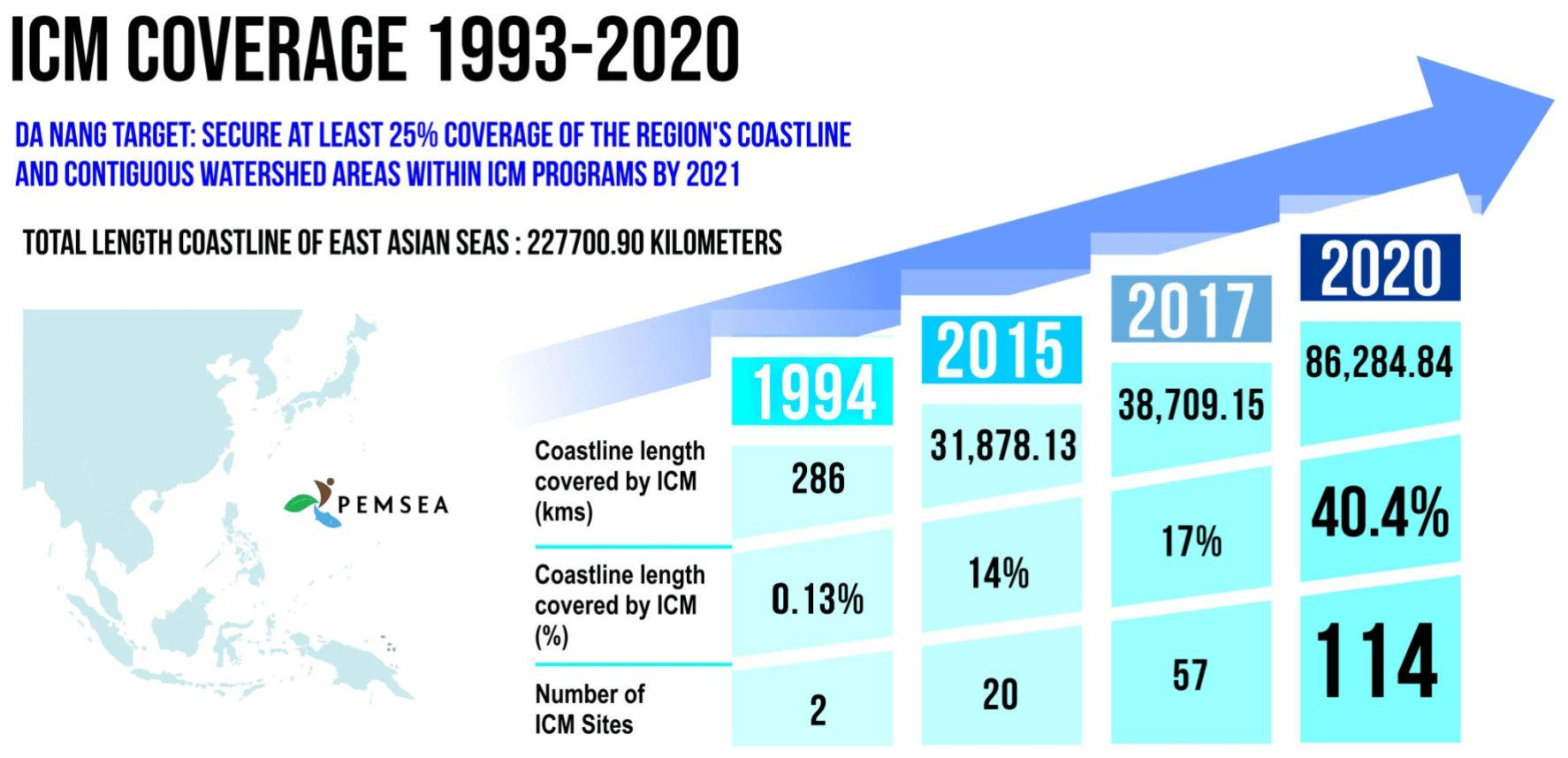
Breadcrumb
The Benefits of ICM
Over the past 20 years, ICM has been applied in dozens of sites across East Asia, covering more than 31,000 km of coastline and benefitting tens of millions of people living in coastal and watershed areas.
ICM helps local governments to achieve social and economic development targets in a number of areas—pollution reduction and waste management; food security and livelihood management; water use and supply management; habitat protection, restoration and management; and natural and man-made hazard prevention and management. In all cases, success has been achieved through an integrated approach.
ICM helps local governments to achieve social and economic development targets in a number of areas—pollution reduction and waste management; food security and livelihood management; water use and supply management; habitat protection, restoration and management; and natural and man-made hazard prevention and management. In all cases, success has been achieved through an integrated approach.
Pollution Reduction and Waste Management in Xiamen, China
The Xiamen waterfront has become a model for ecological and economic success. Three cycles of ICM implementation have provided increased access to the beach and seas for leisure and tourism, cleaner lakes and bays for residential real estate, a venue for industries and a home for rich biodiversity. Investment in ICM has generated net benefit of RMB64 million (USD10.3 million) per year for the community.
Food Security and Livelihood Management in Chonburi, Thailand
ICM implementation enabled local communities to take a more active role in marine conservation and food security in Chonburi. With the support of local governments, concerned agencies, research institutions and private sector partners, local fishers and communities were engaged and trained in the protection of berried blue swimming crabs. Starting from a demonstration project in Sriracha Municipality in 2006, conservation of berried blue swimming crabs has been applied in seven additional municipalities and shared with various local governments in Thailand as part of coastal strategy implementation. A study conducted by Kasetsart University in Sriracha found a 94% increase in crab catch per sampling from 2011 to 2012 accompanied by a 16% increase in average crab size.
Water Use and Supply Management in Preah Sihanouk Province, Cambodia
Through its ICM program, Preah Sihanouk rehabilitated a 5-hectare freshwater reservoir with the assistance of local communities and the UNDP GEF Small Grants Program. Over 5,000 people in the area directly benefited from improved access to potable water for domestic and agricultural use, enhancing their quality of life. The improved availability of water reduced annual expenses for small-scale businesses in the community by an average of 30% of their annual income.
Habitat Protection, Restoration and Management in Batangas, Philippines
Through a province-wide ICM program, 14 coastal municipalities and various stakeholders established a network of marine protected areas to manage and protect fisheries resources, coral reefs, sea grass beds and mangrove forests. From these collaborative efforts, residents have benefited from increased fish catch and abundance and the return of important fish species. A catch monitoring study conducted by the World Wide Fund for Nature - Philippines (WWF-Philippines) confirmed the presence of larger and economically important fish species like skip jacks.
Natural and Man-made Hazard Prevention and Management in Danang, Vietnam
Faced with increasing impacts from floods, typhoons and coastal erosion, Danang focused its ICM program on measures to strengthen the community’s resilience to climate change including natural buffers against storm surges; improved forecasting, early warning, response and recovery systems; and the construction of multipurpose shelters and model houses designed to withstand typhoon damage. Over 6,500 meters of dike system were strengthened as a barrier against saltwater intrusion from sea level rise, saving more than 400 hectares of agricultural land and doubling its productivity.
